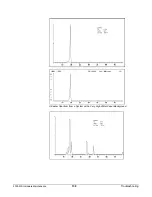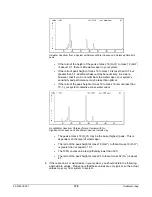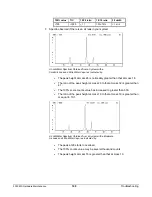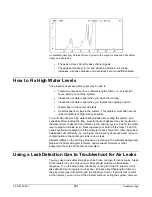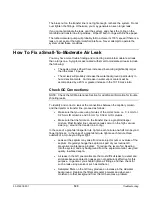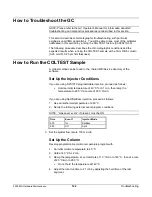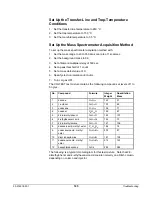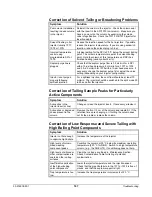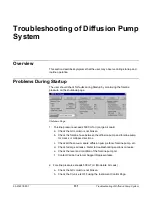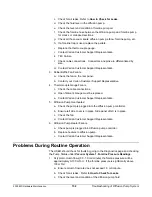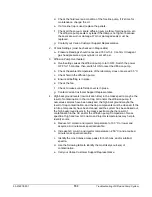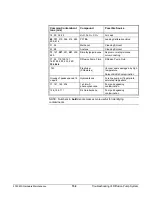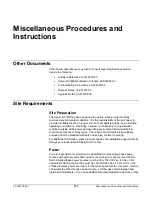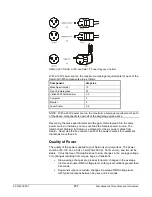
03-914978-00:1
149
Troubleshooting
Correction of Peak Splitting
(Particularly for Low Boilers)
Symptom Solution
Sample flashing in injector (1077, 1078
or 1079), simulating two injections
Lower the injection temperature, or use a
SPI/1079 programmed injection.
Column temperature programming
starts before SPI has finished
programming
Increase the initial column hold time until
SPI/1079 reaches its maximum temperature,
(i.e., typically at 2 min.).
Column is cracked
Re-cut and install the column.
A piece of septum is stuck in the
injector insert.
Replace the insert and septum.
Correction of Extra, Unexpected Peaks in the
Chromatogram
Symptom Solution
Septum bleed, particularly during
temperature programming
Use high-temperature, low-bleed septa. Make
sure that the septum purge flow is set to 0.5
mL/min for a SPI injector with a 10-psi head
pressure, or 2 mL/min for a 1077 or 1078
injector with a 10-psi head pressure.
Impurities from the sample vials (e.g.,
plasticizers present)
Confirm that this is indeed the case by
running a solvent blank with a new syringe.
Use certified sample vials, and keep the
samples refrigerated. Check contamination
table.
Impurities from the carrier gas present
Install or replace the carrier gas filters.
Injector or GC pneumatics
contaminated
Remove the column from the injector and
bake it out at elevated temperature, (e.g., 350
°C) using a purge of at least 20 mL/min.
Impurities present in the sample
Confirm that this is indeed the case by
running a blank or standard.
Solvents are extracting impurities from
the septum.
Switch to a new septum type, lower the
injection temperature, or reduce the injection
volume.
Impurities present in syringe wash
solvent
Use high purity grade solvents.
Correction of Retention Time Differences Between
Runs
Symptom Solution
Unstable carrier gas flow
controller/regulator
Check the pneumatics for leaks. If necessary, replace the
flow controller/ regulator.
Column contamination or
degradation
Condition or replace the column.
Injector leaks
Replace the septum at regular intervals. Check that the
septum nut and capillary column nut are tight.




